Disabilities and Visual Tools
Addressing Learning Disabilities… And Challenging Our Own Disabling Learning Myths
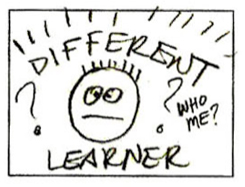
Struggling learners often embrace visual tools with an urgency that is striking — students labeled with a wide range of disabilities, students with language processing issues, autism spectrum, dyslexia, and more. Here we’ll explore the impact of visual tools can have for learners stalled by conventional practice.
Students’ visual work often challenges our view of disabilities and “different” learners. The damaging limitations of text-focused practice are highlighted in a piece first published in Voices From the Middle. The Odd Fish Story, explores the experience of a boy who “couldn’t” be included until adults expanded their vision of what is possible in their mainstream literacy practice.
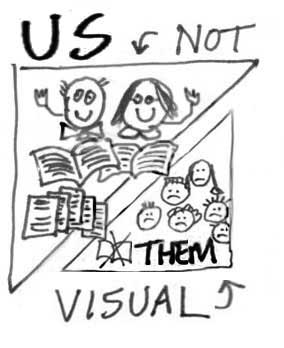
The boy in the Odd Fish story shows us the tools we choose can advance or marginalize learners. We have the choice and the responsibility in our hands! But few schools integrate visual tools in the curriculum in any coherent way. This should be troubling if we recognize specialists have long used visual tools to support learners with disabilities. The sad fact is visual supports are generally seen as “accommodations” or remedial supports targeted for a small minority of “different learners.”
Teachers underscore this pervasive learning myth when say they are “not visual” or “I can’t draw.” But cognitive learning research, and students’ work, forcefully contradicts our notions that visual learners, at core, somehow “different” from US comfortably literate folks. It is easy to show we are all great visual processors. With students help we can debunk learning myths that create and sustain an US vs THEM education divide that disables both students and teachers.
Coming soon specific looks at visuals for: Dyslexic — Deaf Learning – Language Processing — Autism Spectrum – Developmental Delays
Learning Diversity Re-Vision
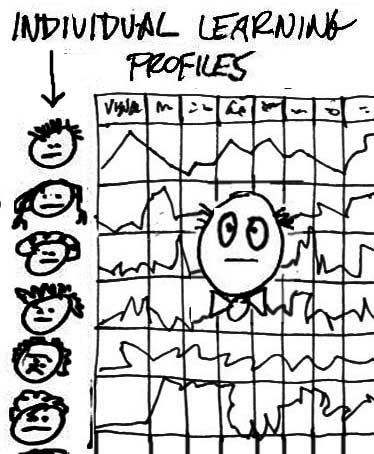
LEARNING DIVERSITY MYTHS THAT DISABLE US ALL:
“I’M NOT VISUAL” AND “WE ALL LEARN DIFFERENTLY”
In recent years addressing “learning diversity” has gotten a lot of attention. Workshops touting brain-based research and strategies designed to tap multiple intelligences are common. But too often learning diversity gets linked to the idea that “we all learn differently” placing impossible demands on teachers to meet each learner’s “individual needs.” This idea is highlighted in the IEP’s of students with disabilities. These “Individualized Education Programs” often have long lists of “individual accommodations” that would be daunting for a team of specialists to satisfy.
But diverse students’ breakthroughs using visual tools signals a more coherent view of learning — one that could make addressing diversity a lot easier. And this view is backed up by a wide range of learning research. We can accurately say, “We all walk differently,” — each person has an individual bone structure and gait — but humans are bipeds, and our basic walking process, upright, one foot in front of the other, is common to us all. No doubt the brain is complex; indeed we are just beginning to grasp its inner mechanics. But plenty of research shows that we (students and teachers) are far more alike as learners than we are different.
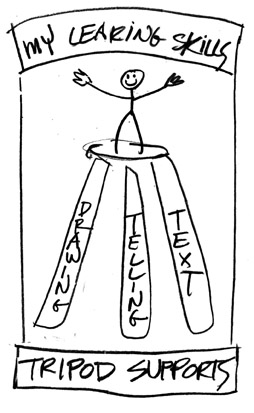
Teachers will tell you the have visual learners in their classroom but many see themselves as “not visual” — “I prefer text,” or “I can’t draw.” But the largest information processing center in all our brains is devoted to visual processing. Once we recognize research shows reading comprehension is at core a visualization skill, capturing meaning in images, we begin to grasp how deeply our visual skills are integrated in our own literacy.
Students, with and without disabilities, show us how tapping our natural visual learning abilities makes us more effective learners. All of us arrive in school with two versatile learning skills — we can talk and we can draw. In fact Donald Graves, the well-known literacy researcher, found drawing and telling are all learners entrance to writing. He showed how integrating text with our natural visual and verbal skills serves high flyers and kids who struggle—including those “different learners” who’ve been given labels like “dyslexic,” “autism spectrum,” and “language processing issues.” (VT2 condensed)
Higher Order Thinking: Engineers, Scientists, Architects… All Visual Thinkers
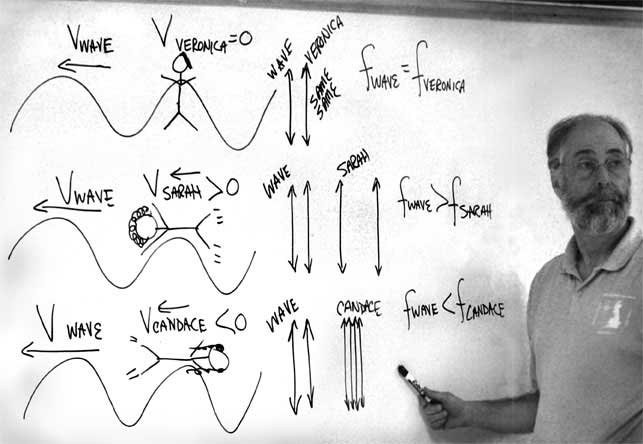
ENGINEERS — CHALLENGING LEARNERS AND TEACHERS TO GET VISUAL
High school teachers who also trained as engineers know how valuable drawing is as an everyday thinking tool. As one said, “You don’t show up at a meeting without drawings to support your ideas.” These folks bring thier real-world experience into the classroom, drawing with their students. Yet these teachers will tell you their drawing is often seen by colleagues as “dumbing down” the serious text-focused curriculum.
Hands-on drawing is not common in high schools (except for a few targeted tasks like graphing or CAD design). But our text-bias practice is counterproductive — especially in light of the urgent STEM push — aimimg to engage more students with real-world disciplines of the coming digital-visual revolution.
These same teachers also recognize the inclusive quality of drawing for their learners. They will tell you concrete pictures make abstract concepts easier to grasp, opening doors for learners who struggle, including students with learning disabilities. But most telling are engineer teachers who tell us they use simple drawings to help them build and focus their own lessons; the act of making diagrams or pictures helped them to organize and then present their ideas more effectively.
For teachers who may be thinking, “But I can’t draw!” there is goood news. If you collaborate with students using visual tools, students will teach how visual tools work. But the sad truth is most students get little chance to show teachers what they can do with hands-on drawing or visual tools integrated in the curriculum, beyond first or second grade. That is why it is so exciting when teachers collaborate with learners to tap all their learning skills. One of the most exciting parts of finding common visual-learning ground with our so-called “different learners” is that we can partner with them in building better learning tools.
